5 ways to open a CD/DVD image in the Windows operating system
There is no way to do without a program for mounting disk images if the computer has content presented in the format of a virtual clone of a CD/DVD disk. Below we will look at five ways to mount a disk image in Windows so that its contents are available in a virtual drive.
1. Mounting images using standard Windows tools
First, let's look at the standard functionality for mounting CD/DVD images in Windows 8.1.
The creation of the Windows 8 version, from which the standard functionality for working with disk images migrated to all successor versions - Windows 8.1 and 10, coincided with the mass phenomenon of computer device manufacturers refusing to include drives. CD/DVD disks were becoming obsolete, and the lack of a drive reduced the final cost of individual laptop models and PC assemblies. Microsoft, in fact, had no choice but to implement the standard ability to connect disk images, at least only in the popular ISO format, so as not to take bread away from third-party software developers. So, if in the version of Windows 7 mounting disk images is possible only through third-party programs, then users will be able to view the contents of the disk image in ISO format using the system.
So how do you mount an ISO disk image in Windows 8.x and Windows 10? In Explorer, select the ISO file, call the context menu and select the “Connect” command.

That’s it – the image is mounted and visible in the virtual drive. You can start viewing its contents in System Explorer.

2. Mounting images in Deamon Tools
Deamon Tools is the market leader in drive virtualization software. The first version of the program appeared in 2000, and, despite the fact that its analogues were released onto the software market earlier, Deamon Tools immediately rapidly gained popularity due to its friendly user interface and the free Lite edition, which was more than enough for home non-professional use . Daemon Tools works with almost all disk image formats. The program's operation is invisible even for low-power devices, since it uses a minimum of system resources. The free Lite version contains limitations - in particular, it is the ability to simultaneously mount only 4 virtual drives. Whereas in the paid version Pro Advanced, 32 drives can be mounted on the computer.
Relatively recently, Daemon Tools has radically changed, and the classic interface has been replaced by dullness and wretchedness, but with an extremely clear description of functions and a clear internal organization of sections. The functionality of the program has been expanded, but not everything is available in the Lite version. Naked demonstration of individual functions without the possibility of using them is a marketing ploy to encourage users to purchase the paid version.
Daemon Tools Lite 10 is available for free download on the developer's website.

An important point when installing the program is choosing the free license option.

Among the innovations in the Daemon Tools version is the option to scan your computer to detect disk images and display them in the program’s internal library. Well, let's take advantage of this opportunity.

After scanning, all possible virtual CD/DVD and hard drives will be visible in the program window. Select the desired image, open the context menu and execute the “Mount” command.

That’s it – the image is mounted into a virtual drive.

As before, disk images can be added to the Daemon Tools interface one at a time using the quick mount button.

To unmount a virtual drive, call the context menu on its connection icon at the bottom of the program window and select the appropriate command.

3. Mounting images in UltraISO
UltraISO is a mega-program for working with disk images, designed for professional use. Among its capabilities are the following: creating images of CD/DVD disks, burning them to discs, editing images without unpacking, optimizing their structure in order to save space, converting images from one format to another, etc. This program is also a reliable and proven tool for creating bootable flash drives, but one of its features is mounting images into virtual drives.
UltraISO is a paid software product. The free trial version is of little use if we are talking about making full use of most of the features. Thus, the trial version has limitations due to which it will not be possible to create or burn a disk image whose weight is more than 300 MB. In our case, when we are talking purely about mounting a disk image into a virtual drive, this limitation does not apply. Therefore, you can safely download the trial version with a Russian-language interface from the UltraISO developer website.

After launching UltraISO, you will see a small window telling us about the limitations of the trial version and encouraging us to purchase the paid version. Click the “Trial period” button.

In the program window, open the “File” menu and click the “Open” button.

Add a disk image file.

Expand the “Tools” menu and select “Mount to virtual drive” among the available commands.

A small window will appear where you need to select the mount button. The button next to it - “Unmount” - must be used, respectively, to extract the CD/DVD disk image from the virtual drive.

4. Mounting images in Alcohol 52%
Alcohol 52% Free Edition is a free, stripped-down version of the well-known CD/DVD emulation program Alcohol 120%. Unlike the latter, the paid Alcohol 52% allows you to mount a limited number of virtual drives at the same time - up to 6 pieces. In the free version of Alcohol 52% Free Edition, this number is completely reduced to a minimum - only 2 parallel virtual drives. Also, the free version does not provide for recording discs to discs.
The free trial version of the program can be downloaded from the link from the official website of the developer.

At the time of writing this article, it was not possible to download the program installer using the browser downloader, but the problem was successfully resolved using the Download Master download manager.

There are no limits to the tricks of developers who want paid versions of software products to be purchased from them. In the case of the trial version of Alcohol 52%, we will not just look at the demo window with an offer to buy the full version of the program, but we will even have to wait a few seconds until the “Ok” program launch button becomes active.

To mount a disk image into a virtual drive, in the Alcohol 52% program window, expand the “File” menu and select “Open”.

Add the image file to the program window, open the context menu on it and select the “Mount to device” command.

To extract the image from the virtual drive, open the context menu again and select the “Dismount image” command accordingly.

5. The fastest way to mount and unmount a virtual drive
The methods for working with virtual drives within programs are discussed above. But there is a more convenient, faster way to mount and unmount a virtual drive. If Daemon Tools Lite is installed during installation with a program that opens disk image files by default, you can mount the drive by opening the image as a regular file by double-clicking the mouse from the system explorer. In the case of the UltraISO program, the disk image will be instantly added to the program window for further actions. But Alcohol 52% will simply open, as with a normal launch, however, it is also convenient.
If the default program was not assigned during installation, this can be done manually at any time. To designate a program that opens a particular type of image file by default, find any of them in Windows Explorer and select “Properties” in the context menu.

Click the change application button.

If the program you need is not in the list, select "Advanced", scroll down to the end of the list and click the option to search for another application.

Specify the program launch file in the installation folder.

Apply the changes.

Now in the system explorer the CD/DVD image file will be displayed as the default program icon. And when launched, the image will open in this program.

The easiest way to unmount a virtual drive is in System Explorer. Among the commands in the context menu called on the mounted drive, there is a function to eject the disk.

After this, the virtual drive will disappear.
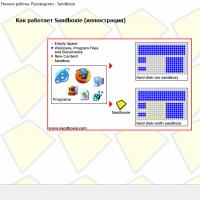 Sandboxie download Sandboxie in Russian download sandbox for free
Sandboxie download Sandboxie in Russian download sandbox for free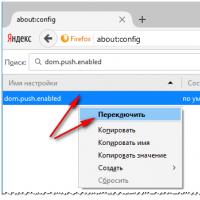 How to disable PUSH notifications (alerts) in browsers: Google Chrome, Firefox, Opera
How to disable PUSH notifications (alerts) in browsers: Google Chrome, Firefox, Opera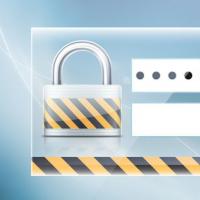 25 online tools to generate easy-to-pronounce and random passwords
25 online tools to generate easy-to-pronounce and random passwords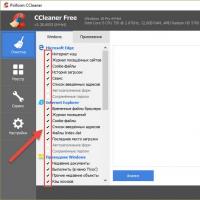 How to use CCleaner
How to use CCleaner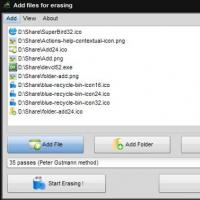 Programs for permanently deleting files
Programs for permanently deleting files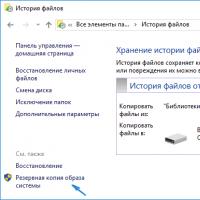 Windows 10 backup
Windows 10 backup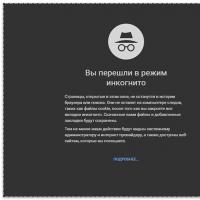 How to enable incognito mode in Chrome
How to enable incognito mode in Chrome